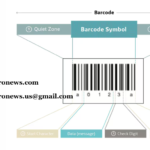Temperature Gradient Tubes, commonly known as TG Tube, represent a cutting-edge technology that has gained significant traction across various scientific and industrial domains. These devices are pivotal in accurately measuring temperature variations, providing crucial data for a wide range of applications. This detailed article delves into the intricacies of TG Tube, their significance, applications, and the science behind their operation. Whether you’re a researcher, an engineer, or someone with a keen interest in technological advancements, this guide will offer a thorough understanding of TG Tube.
What is a TG Tube?
Understanding the Basics
A TG Tube, or Temperature Gradient Tube, is a specialized device used to measure temperature differences along its length. It comprises a tube with embedded sensors placed at regular intervals. These sensors collect temperature data from different points along the tube, which can then be analyzed to understand the temperature gradient – the rate of temperature change over a specified distance.
Key Features of TG Tube
- High Precision: TG Tube are engineered to deliver exceptionally accurate temperature measurements, which is crucial for sensitive and precise applications.
- Durability: Constructed to withstand harsh conditions, TG Tube offer long-term reliability, making them suitable for demanding environments.
- Versatility: TG Tube are adaptable to various applications, from scientific research to industrial processes, highlighting their broad utility.
Applications of TG Tube
In Scientific Research
TG Tube are invaluable in laboratory settings where precise temperature measurements are essential. They enable researchers to investigate the thermal properties of materials, study heat transfer mechanisms, and explore other temperature-dependent phenomena.
In Manufacturing Processes
Industries such as pharmaceuticals, food processing, and electronics rely heavily on TG Tube to maintain optimal production temperatures. This ensures that products meet stringent quality standards and function as intended.
In Quality Control
In quality control processes, TG Tube detect temperature variations that might compromise product integrity. Early identification of potential issues allows manufacturers to prevent defects and maintain consistency.
How Does a TG Tube Work?
The Science Behind TG Tube
A TG Tube operates by establishing a temperature gradient along its length. Sensors placed at intervals along the tube measure the temperature at each point. The collected data is then used to determine the temperature profile and identify any variations. This information is critical for applications requiring precise thermal management.
Components of a TG Tube
- Tube: The primary structure where the temperature gradient is established.
- Sensors: Devices positioned at regular intervals along the tube to measure temperature.
- Data Logger: An instrument that records and stores the temperature data from the sensors.
Benefits of Using TG Tube
Accuracy
One of the foremost advantages of TG Tube is their high accuracy. Regular calibration and maintenance are necessary to ensure that the sensors provide precise readings, as factors like sensor drift and environmental conditions can affect accuracy.
Reliability
TG Tube are renowned for their reliability. Designed to function consistently under harsh conditions, they offer dependable performance over extended periods.
Versatility
The adaptability of TG Tube makes them valuable across various fields. From scientific research to industrial applications, their ability to provide accurate temperature measurements in diverse settings underscores their versatility.
Choosing the Right TG Tube
Factors to Consider
When selecting a TG Tube, consider the following factors to ensure it suits your specific needs:
- Temperature Range: Ensure the tube can handle the expected temperature range for your application.
- Material Compatibility: Choose a tube made from materials that are compatible with the substances it will be exposed to.
- Sensor Precision: Opt for tubes with high-precision sensors for accurate measurements.
Common Types of TG Tube
- Standard TG Tube: Suitable for general applications with moderate temperature ranges.
- High-Temperature TG Tube: Designed for applications involving extreme temperatures.
- Specialized TG Tube: Custom-built for specific applications, such as those requiring particular material compatibility.
Maintenance and Care of TG Tube
Regular Calibration
To maintain the accuracy of TG Tube, regular sensor calibration is essential. This process involves comparing the sensor readings with a known standard temperature source and adjusting the output if necessary. Regular calibration ensures precise and reliable temperature measurements.
Cleanliness
Keeping the TG Tube clean is vital to prevent contamination that could affect temperature readings. Regular cleaning helps maintain the tube’s performance and longevity. Inaccurate readings due to contamination can lead to improper temperature control, potentially compromising product quality or research outcomes.
Proper Storage
Storing the TG Tube in a controlled environment is crucial to avoid damage. This includes keeping it in a dry, clean place, away from direct sunlight and extreme temperatures. Proper storage conditions can significantly extend the tube’s lifespan.
Advancements in TG Tube Technology
Enhanced Sensor Technology
Recent advancements in sensor technology have significantly improved the precision and responsiveness of TG Tube. Modern sensors can detect even minute temperature changes, providing more detailed and accurate data.
Integration with Digital Systems
TG Tube are increasingly being integrated with digital data logging systems, allowing for real-time monitoring and analysis. This integration facilitates easier data collection, storage, and interpretation, enhancing the overall efficiency of temperature measurement processes.
Challenges and Solutions in TG Tube Applications
Sensor Drift
One of the challenges in using TG Tube is sensor drift, where sensor accuracy degrades over time. Regular calibration and using high-quality sensors can mitigate this issue, ensuring consistent accuracy.
Environmental Interference
Environmental factors such as humidity and electromagnetic interference can affect the accuracy of TG Tube readings. Shielding the sensors and maintaining controlled environmental conditions can help minimize these interferences.
Future Prospects of TG Tube
Broader Industrial Adoption
As industries increasingly recognize the importance of precise temperature control, the adoption of TG Tube is expected to grow. This is particularly true for sectors like pharmaceuticals and electronics, where temperature precision is critical.
Innovations in Materials
Ongoing research into new materials for TG Tube promises to enhance their performance and durability. Innovations in sensor materials, in particular, could lead to even more accurate and reliable temperature measurements.
Conclusion
TG Tube are indispensable tools in various scientific and industrial applications, offering high precision, reliability, and versatility in temperature measurement. Understanding the fundamentals of TG Tube, their components, and how they operate can help you make informed decisions for your specific needs. Whether you’re involved in research, manufacturing, or quality control, TG Tube provide the accuracy and dependability required for effective temperature monitoring and control.
FAQs About TG Tube
What Industries Use TG Tube?
TG Tube are utilized in a wide range of industries, including pharmaceuticals, food processing, electronics, and scientific research, due to their ability to provide precise temperature measurements.
Can TG Tube Measure Extreme Temperatures?
Yes, TG Tube are designed to measure various temperatures, including extreme conditions, depending on the type of tube used.
How Often Should a TG Tube Be Calibrated?
The frequency of calibration depends on the application and usage. However, it is generally recommended to calibrate TG Tube every six months to maintain accuracy.
Are TG Tube Easy to Install?
Yes, TG Tube are relatively easy to install and can be integrated into existing systems with minimal modifications, making them convenient for various applications.
What is the Typical Lifespan of a TG Tube?
The lifespan of a TG Tube varies based on usage and maintenance. With proper care, a TG Tube can last several years, providing reliable temperature measurements throughout its operational life.
In conclusion, TG Tube represent a vital technology for anyone requiring precise temperature control and monitoring. By understanding their functionality, benefits, and maintenance requirements, users can effectively leverage this technology to enhance their research, manufacturing processes, and quality control efforts. As advancements continue to emerge, the role of TG Tube in various industries is poised to become even more significant.
Also Read: e banci lpnm: Unveiling Its Significance and Applications




























































































1 thought on “TG Tube: A Comprehensive Exploration of Temperature Gradient Tubes”